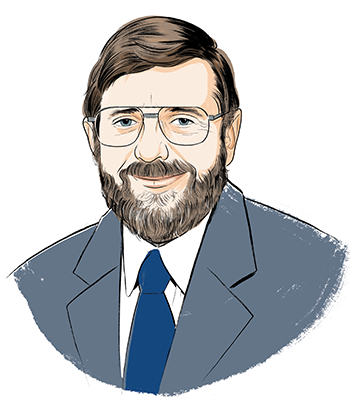Bill Phillips
1997 Nobel Prize in Physics

NIST Fellow William D. Phillips received the 1997 Nobel Prize in Physics “for development of methods to cool and trap atoms with laser light.” He shared the honor with Steven Chu of Stanford University and Claude Cohen-Tannoudji of the École Normale Supérieure in Paris, France.
Their work combined to create some of the most important technologies of modern atomic physics, which thousands of researchers worldwide employ today for a wide variety of applications.
Phillips began his experiments with laser trapping and cooling shortly after he arrived in 1978 at the National Bureau of Standards (the agency that became NIST), with the intent of creating a more accurate atomic clock. Several of his innovations in the following years became landmarks in the field. These included a device using a laser along with a magnetic field to decelerate and cool an atomic beam (the “Zeeman slower”); demonstrating the first device that trapped electrically neutral atoms (a magnetic trap); and measuring a temperature far below that predicted by the accepted theory of laser cooling at the time (known as sub-Doppler cooling).
These web pages examine Bill Phillips’ 1997 Nobel Prize in more depth by exploring the following questions:
- Who is Bill Phillips, and how did he get involved with the science that led to the Nobel Prize?
- Why were scientists interested in trapping and cooling atoms with lasers?
- How did the discovery unfold? Was there a “eureka” moment?
- What has been the legacy of the Nobel Prize-winning effort?
“Bill is infamous at conferences for asking the greatest number of questions. A recurring joke is that conference session chairs who know him will ask, ‘Are there any questions from anyone other than Bill?’ But they’re always good ones. He comes up with questions that dig deeply into our basic understanding of the science and we always learn from them.”
– Gretchen Campbell, physicist, co-director, Joint Quantum Institute

